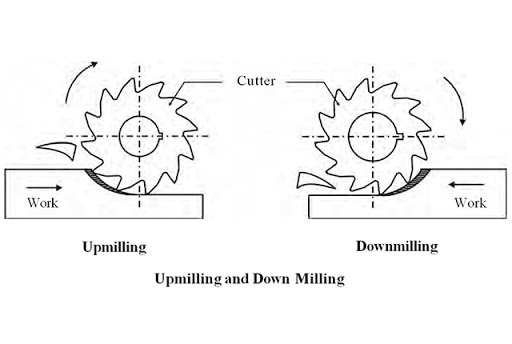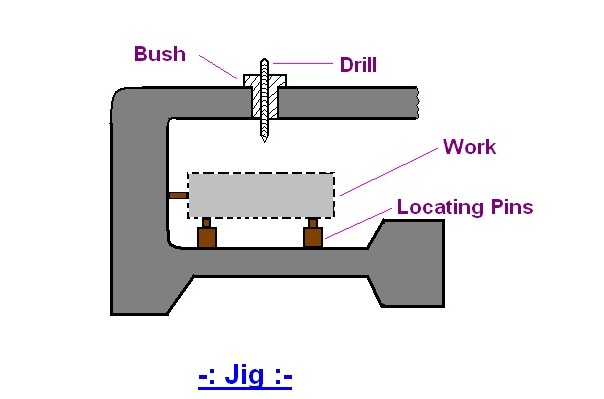Up Milling is the process of removing metal by a cutter which is rotated against the direction of travel of the workpiece is called up-milling. It is also called conventional milling.
In up-milling, the chip thickness is minimum at the beginning of the cut and maximum at the end of cut. The cutting force varies from zero to maximum.
Down Milling is the process of removing metal by a cutter which is rotated in the same direction of travel of the workpiece is called down milling. It is also called climb milling.
In down milling, the chip thickness is maximum at the beginning of the cut and minimum at the end of cut. The cutting force varies from maximum to zero.
249) In ______ operation, the cutting force is maximum when the tooth begins its cut and reduces it to minimum when the tooth leaves the work.
Answer is:
down milling
Explanation:

Related Production Engineering MCQ with Answers
Answer is:
differential indexing
Answer is:
inter-related to index change gear ratio
Answer is:
all of these
Explanation:
The purpose of jigs and fixtures is to
* increase machining accuracy
* facilitate interchangeability
* decrease expenditure on quality control
Answer is:
holds and locates a work piece and guides and controls one or more cutting tools
Explanation:
A jig is a work-holding device that holds, supports, and locates the workpiece and guides the one or more tools to perform a specific operation.
A fixture is a work-holding device that only holds, supports, and locates the workpiece, but does not guide the tools to perform a specific operation.
